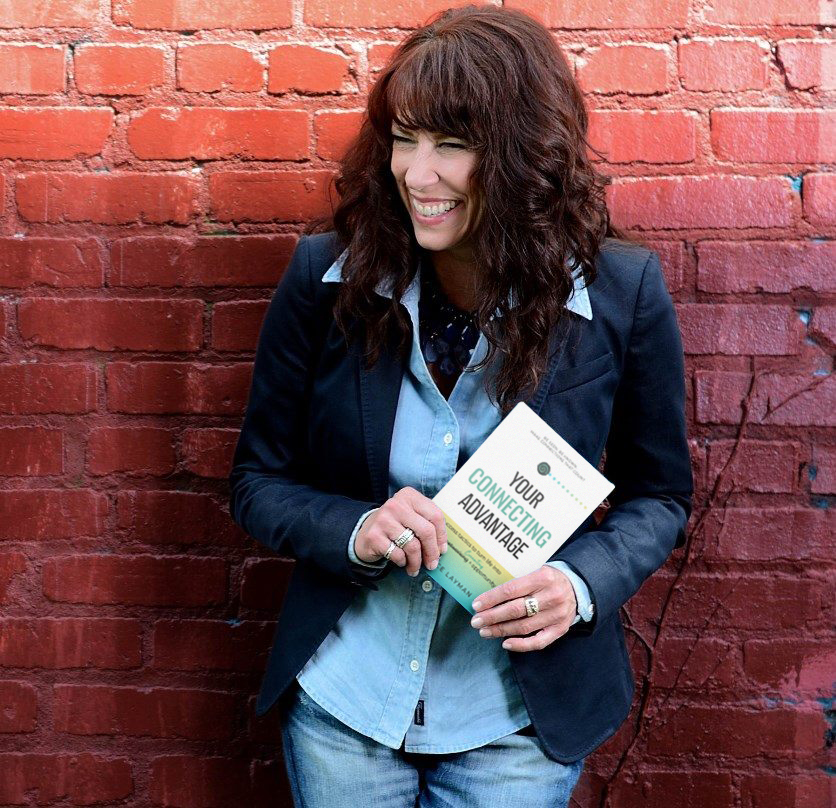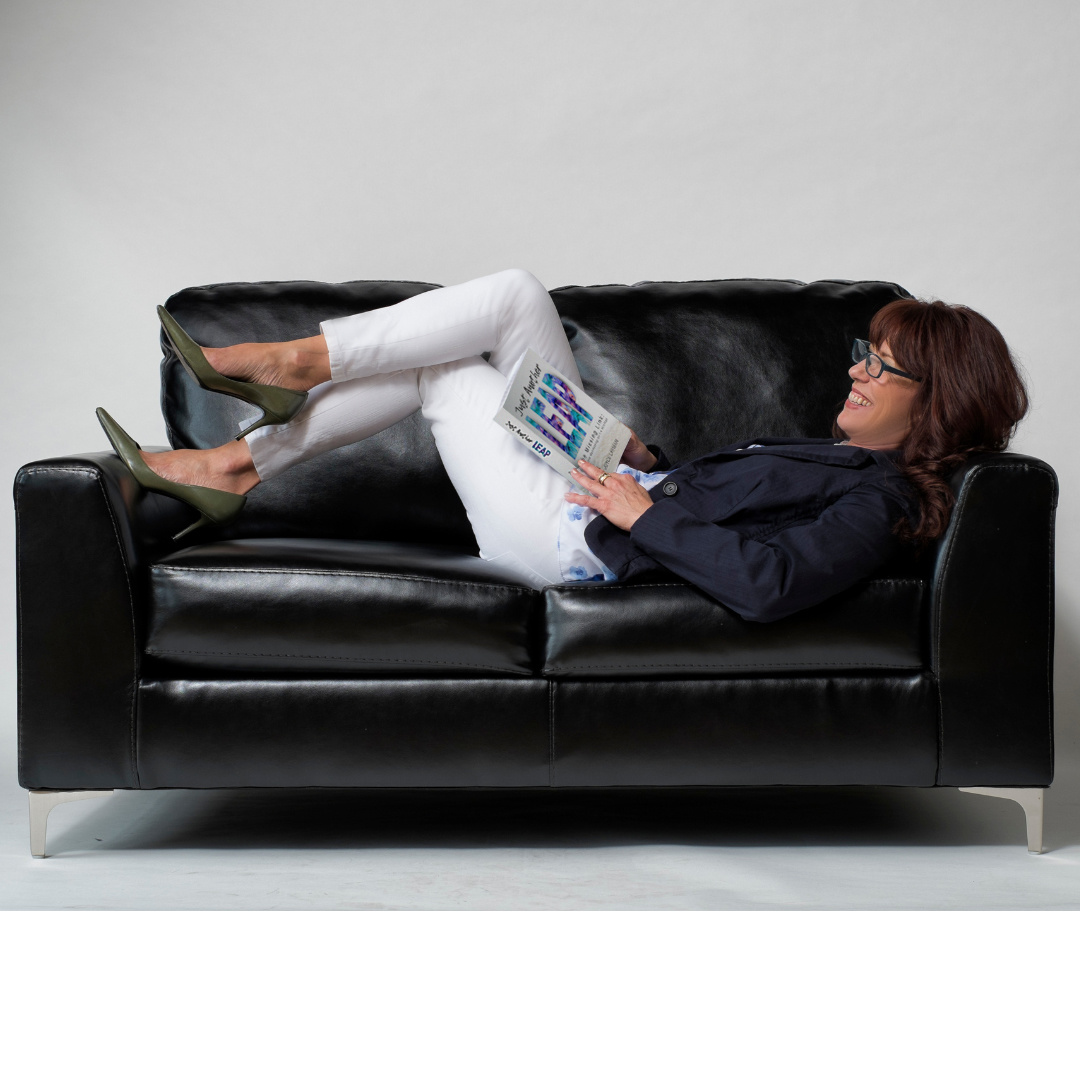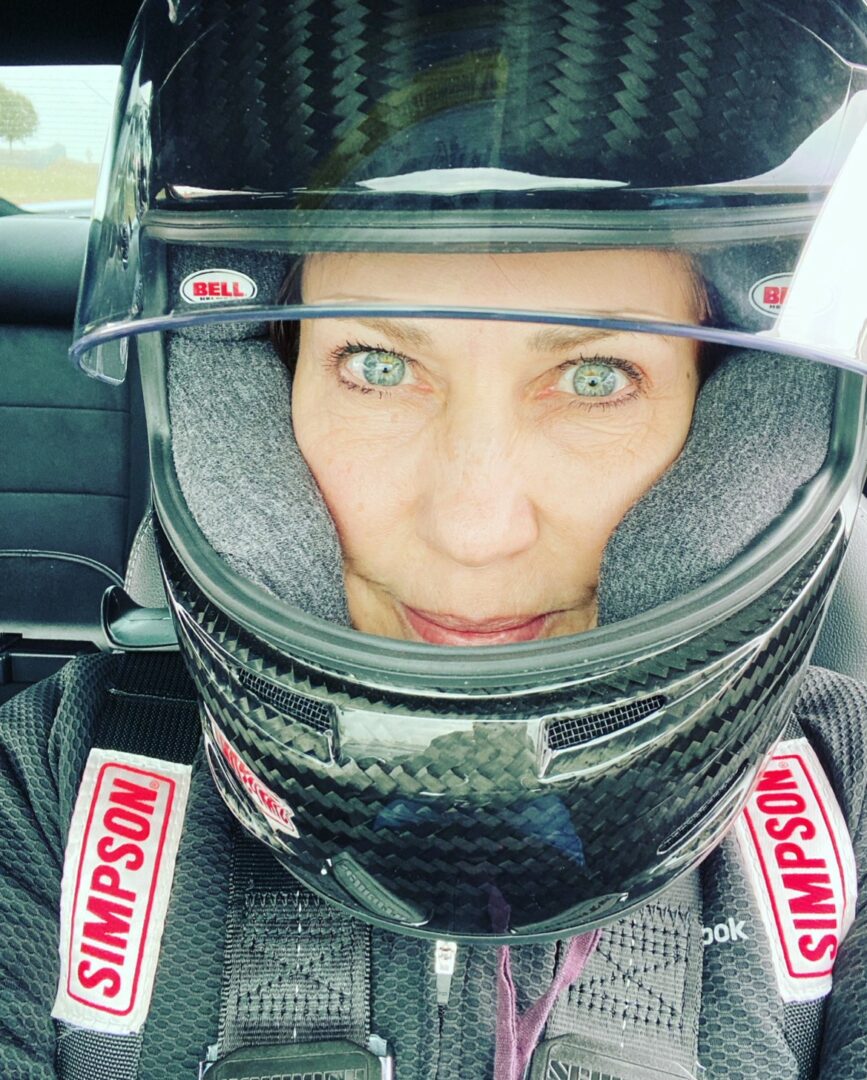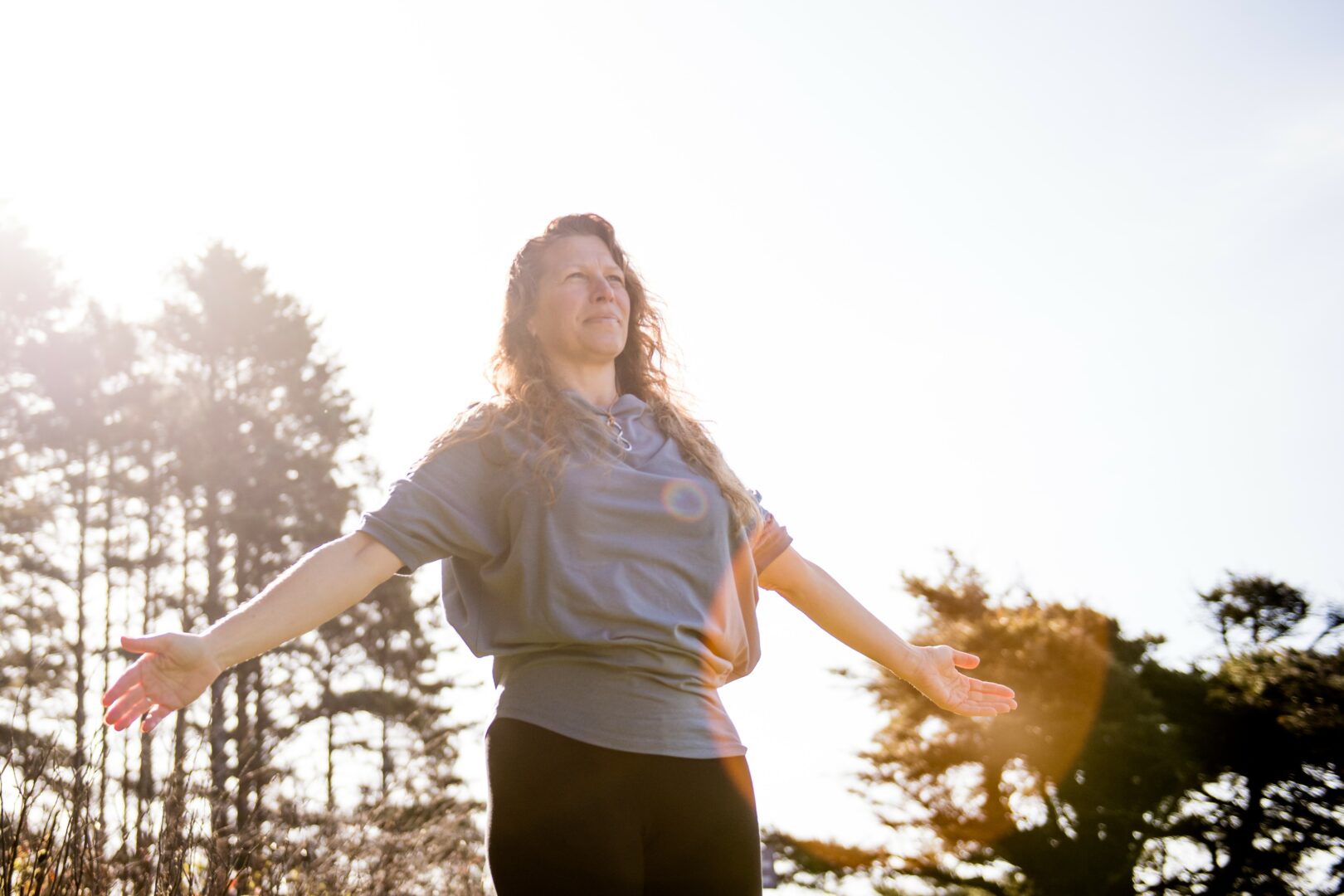We’re looking forward to introducing you to Joyce Layman. Check out our conversation below.
Joyce, it’s always a pleasure to learn from you and your journey. Let’s start with a bit of a warmup: What is a normal day like for you right now?
A normal day for me? It’s usually a mix of what I plan and what actually happens.
I always double-check my calendar the night before so I know what’s coming, but mornings still start the same way. The cats are first in line and not shy about letting me know if I’m five minutes late with breakfast. Any pet parent (or parent in general) can relate. Once they’re settled, I like a little quiet time and coffee, and if the weather isn’t unbearable, I’ll take it outside for a reset before diving into emails and the to-do list.
Most days have a theme. If it’s a content day, I’m writing my weekly newsletter, scheduling emails for my list, and pulling together the next edition of The Leap, my LinkedIn newsletter. Other days are client-focused with coaching calls or done-for-you projects. And even though I plan, I’ve learned to expect curveballs. As a Kolbe A Quick Start, I actually like the opportunities that pop up, like a last-minute podcast interview request or an unexpected client idea worth chasing.
Some nights I shut the laptop and call it good. Other nights I circle back after dinner, especially if there’s a deadline. I’ve also learned I need movement built in — stretching, walking, or anything that gets me away from technology. That five-minute break in the day keeps the creativity flowing and keeps me sane.
I’ve been running my business since 2008, so I know no two days ever look exactly the same. But right now, a “normal” day is coffee, cats, content, client work, and plenty of curveballs.
Can you briefly introduce yourself and share what makes you or your brand unique?
My background started with training in performance mindset through The Pacific Institute. That experience sparked me to launch my own business in 2008, and I’ve been coaching, consulting, and speaking ever since. For more than a decade, my focus was on corporate trainings, conferences, and keynotes. When the pandemic hit and live events stopped, I shifted more into coaching, which grew into group programs and private clients. Now it’s come full circle as corporate clients are finding me again.
My first book came out of my TEDx talk on comfort zones and how to push past them. Later, after making plenty of mistakes building my own brand and learning how to build a network that actually works, I wrote Your Connecting Advantage. This book is about helping people build their brand and connections in a strategic, genuine way without the awkward networking that many people dread. A Women in Technology Conference last year was the spark for revising and republishing it.
While I was updating that book, I realized I needed to go back and completely rewrite Just Another Leap. What started as a short reference inside Your Connecting Advantage turned into a fully expanded book on mindset, clarity, and navigating the messy middle. Having both books back out in the world has already opened doors, including new association clients who have booked me to speak on those topics.
What makes my work unique is how I take the science of how we think and translate it into practical tools people can actually use. We all have incredible potential, but the difference between staying stuck and making real progress often comes down to how we think, especially under pressure. I explain how the brain filters information — including the Reticular Activating System (RAS), your internal “search engine” — in a way that helps people spot opportunities they’d normally miss. Layer that with the lessons I learned building my own brand and connections, and that’s what runs through my books, my coaching, and my speaking.
Right now, I’m in the middle of two big projects that couldn’t be more different. On one side is the official launch of Just Another Leap, which is all about how to get shit done when your brain keeps hitting the same damn wall. On the other is More Leads, Less Hustle, a micro audio summit built around unique lead generation strategies you won’t find bundled together anywhere else. I’ve got experts speaking on everything from Substack and GEO (generative engine optimization) to Hello Audio and Pinterest. One is personal and designed to help people push through what’s blocking them. The other is tactical and focused on growing an audience, building an email list, and getting clients. Different projects, different focus, but both tie back to what I’ve always done: help people move forward with clarity and confidence.
Appreciate your sharing that. Let’s talk about your life, growing up and some of topics and learnings around that. What was your earliest memory of feeling powerful?
My earliest memory of feeling powerful wasn’t in school or on a stage. It was with my horse.
High school was rough. Let’s just say it felt more “mean girls” than happy memories, and it took a real toll on my confidence. What pulled me out of that place was rediscovering a childhood passion. Horses had always been my escape. At twelve, my best friend and I would disappear on horseback, riding all day across the countryside, slightly feral and having the time of our lives.
In my late 20s I started riding again, but this time I decided to show. That meant real commitment. Rain or shine, hot or cold, I was riding three to four days a week all year long. My mare, Admiral’s Behrfoot Bay-B, was green, and so was I. Neither of us knew what we were doing in the show ring, but we were both determined.
I started her in saddle seat, but she didn’t have the kind of movement her dad was known for. And to make matters tougher, there was always one horse, Captured Angel, a gorgeous gray Saddlebred from Nebraska, who dominated every class. On my best days I was second or third to her, but never first.
Along the way we had a scary setback. A mishap with a western saddle ended with Bay-B flipping over backward in the crossties on asphalt and bruising her ribs. It forced us to regroup. Eventually we made the switch to hunt seat, and she finally found her job.
From there things started to click. In 1996, Baby and I won the Saddle and Bridle Magazine Hunter Classic Finals in St. Louis. I’ll never forget riding out of that ring knowing we had finally broken through. My trainer once told me I was the most competitive person she’d ever met, and she wasn’t wrong. I was stressed, intense, and maybe a little bitchy before getting on, but I was also all in. By 1998, we were winning nearly every class we entered.
Bay-B was my once-in-a-lifetime horse. Together we proved that determination and hard work could take a passion and turn it into a national championship. But more than the ribbons or the goals, what I gained was something I needed, and that was confidence. The kind you earn through sweat, setbacks, and trust in a 1200 pound partner you can’t completely control. Horses will humble you quickly, but when all that work finally comes together, it changes you.
That’s when I first felt powerful. Not because it came easy, but because I earned back the confidence I had lost and proved to myself that I was capable.
If you could say one kind thing to your younger self, what would it be?
If I could tell my younger self one thing, it would be this: yes, you are strong, capable, and smart (and no, this isn’t a Stuart Smalley skit). Life is going to throw things at you that will not just knock the wind out of you, and they’ll knock you to your knees. And yet, you will stand back up. Every single time. You’ll be able to stand because the people you surround yourself with will help you through, and because you have grit and resilience. Make your motto “what doesn’t kill me had better start running.”
And remember this: in life you’ll always run into people with more experience than you, or more advantages, or more expensive cars on the track. That doesn’t mean you can’t compete. (So don’t talk yourself out of being an intermediate driver when the instructors are already telling you that you have the skills—yes, even if you still want to debate with them about it.) Trust yourself enough to step into the level you’ve earned, even if your brain tries to convince you you’re not ready.
Next, maybe we can discuss some of your foundational philosophies and views? Is the public version of you the real you?
The public me and the real me aren’t that far apart. When I started doing trainings back in 2006 and then moved into keynotes and breakout sessions, I learned fast that the way to connect with an audience wasn’t just through data and stats. Those matter, but the real connection came from stories. Authentic ones. The funny, the awkward, the uncomfortable.
So when you see me on social media, you’ll see the same mix. You’ll see cats, you’ll see swearing, you’ll see my plant addiction on full display, and you’ll also see the tougher moments. I went all in with that same approach when I rewrote Just Another Leap. At first I thought it would be a 250-page “safe” version, and then I said screw it and put in all the stories, even the ones that aren’t always flattering but are always honest.
Is it a little crazy sometimes to put so much out there? Sure. But it’s never been about getting attention. Over and over again, people have come up to me after a breakout session or messaged me online and said, “Thank you for sharing that. I thought I was the only one.” That’s why I keep doing it.
I’ll never forget a workshop I ran years ago that was focused on building a brand and making strategic connections. When the evaluations came back, one person wrote, “All she talks about is the connections she has.” They completely missed the point. At the time I had already written Your Connecting Advantage, which is built around the same idea. If a former wallflower who wrestled with self-esteem issues could stumble, get rejected, and still keep showing up — and if that opened doors I never imagined — then maybe somebody else would see themselves in that and try too.
The same holds true with my clients. The ones who hire me for 1:1 coaching or done-for-you work tell me it’s the mix of strategy and authenticity that matters. If they didn’t like my personality, they wouldn’t hire me. Most of the time they’ve already seen me on social or at a workshop before we ever talk. One private client actually found me through a blog post, then reached out on Instagram. We scheduled a call, and she worked with me for a full year. That is how the connection starts. It is real first, and the strategy follows.
But if I can combine the laughter, the swearing, and the tough stuff in a way that makes one person feel seen and understood, then that is the real me.
Thank you so much for all of your openness so far. Maybe we can close with a future oriented question. When do you feel most at peace?
Everybody needs a way to give their brain a break. It doesn’t matter if you’re running a business, leading a team, working inside a company, or caring for family. We all need that reset to recharge, get creative again, and find some balance. Some days it might only be ten minutes, but it makes all the difference.
For me, peace looks like being outside. I love getting into my iTunes playlist and heading out to do yard work like planting flowers, trimming shrubs, and cleaning things up. I always do it in flip-flops, and the dirtier I am by the time I’m done, the better. That’s my yard zone, my grounding zone. There’s just something about sweat and dirt that feels good. The same held true when I was at the horse barn years ago. It’s that tired-but-satisfied kind of feeling that only comes from putting in the work with your hands.
I also find peace walking the trails by my house. No phone so I can pay attention to the sights and sounds in the woods. It’s simple, but it resets me in a way nothing else can.
And then there’s the other side of me. In 2017 I went from horses to a different kind of horsepower when I started tracking my Mustang GT. On a racetrack you have to be fully focused. When you’re going 120 miles an hour over a blind hill into a right turn, there’s no room for distraction. That’s not peaceful in the traditional sense, but it’s pure joy and another kind of reset.
Peace doesn’t always mean sitting still or meditating. Sometimes it’s quiet. Sometimes it’s adrenaline-fueled joy. What matters is finding what works for you. So here’s my challenge: what’s your brain reset? What gives you peace, focus, or joy that helps you come back ready for what’s next?
Contact Info:
- Website: https://www.joycelayman.com
- Instagram: https://www.instagram.com/joycelayman
- Linkedin: https://www.linkedin.com/in/joycelayman
- Facebook: https://www.facebook.com/joycelayman
- Youtube: https://www.youtube.com/@joycelayman
- Other: Amazon author page: https://www.amazon.com/stores/Joyce-Layman/author/B0153YQLNM
Private Podcast: https://layman.live/RASPodcast




so if you or someone you know deserves recognition please let us know here.




